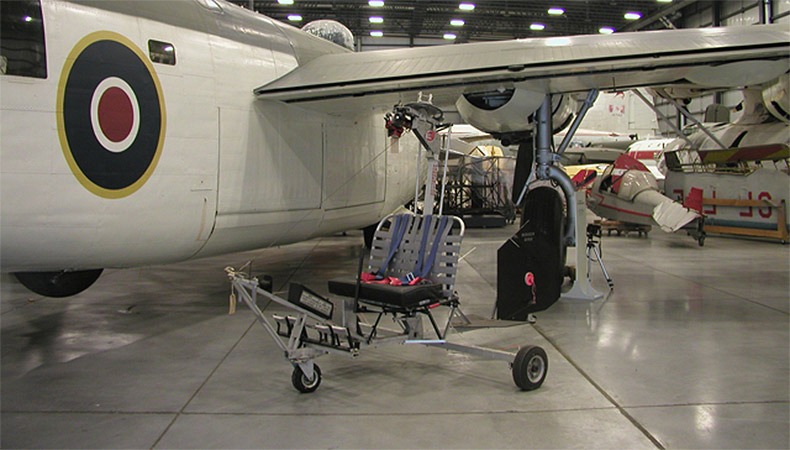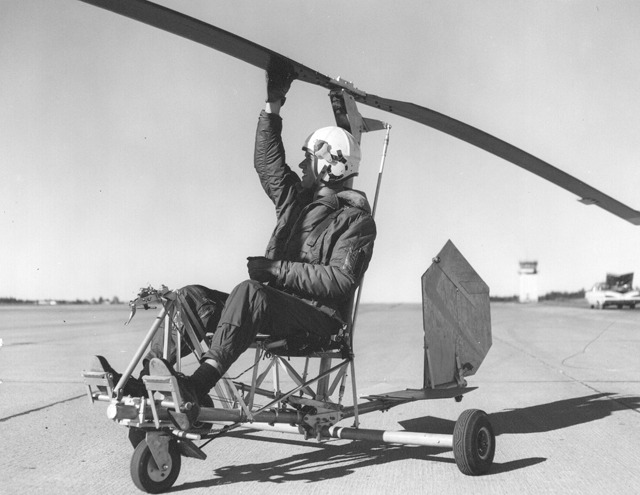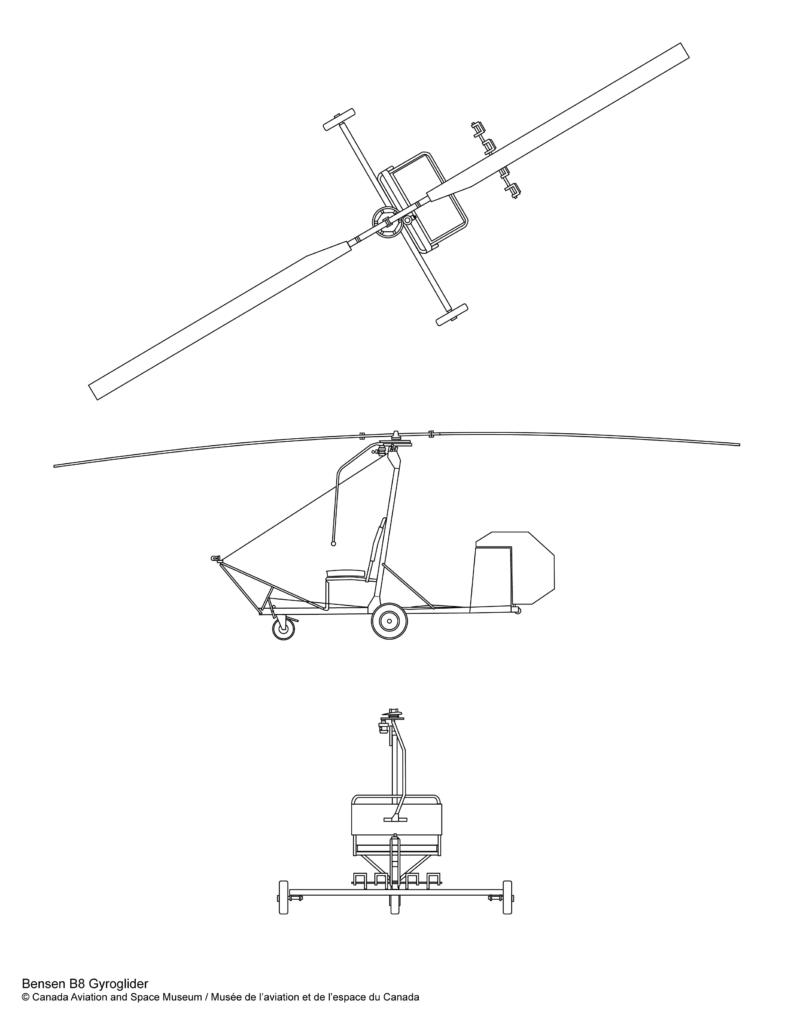Bensen B8 Gyroglider
Highlights
- A U.S. recreational, two-seater autogyro designed by Bensen Aircraft Corporation and produced by Bensen and amateur builders from 1955 to 1987
- An autogyro (cousin of the helicopter kept aloft by a free wheeling rotor) was capable of short take-off and landing but could not hover, take off vertically, fly backwards or sideways
- Dr. Igor Bensen designed this unpowered autogyro (it required towing by vehicle for take-off) and coined the term “gyroglider”
- Gyrogliders were sold in kits for home assembly but required specialized pilot training
- Autogyros were associated with the 1930s but regained popularity during the 1970s as part of the homebuilt aircraft movement
- First flight was in c. 1977

Artifact no.: 2002.0373
Manufacturer: Kit from Bensen Aircraft Corporation
Manufacturer location: United States
Manufacture date: c. 1977
Acquisition date: 2002
Registration number: C-GSXV
History
A number of small gyroplanes have appeared in the recreational aircraft community since the 1970s. Gyroplanes require specialized pilot training and need to be flown cautiously as the flight parameter envelope is very narrow. (The gyroplane is a rotary-wing aircraft that derives its lift from a free-wheeling rotor. See Bensen B8MG Gyrocopter). The Gyroglider two-seater was designed as a flight trainer by the Bensen Aircraft Corporation to teach the fundamentals of gyroplane control. The Museum’s example was built and modified in Toronto by Mr. Alexander Dutkewych.
A small one-cylinder engine pre-rotated the Gyrogliders rotor before takeoff. Towed behind an automobile at about 45 km/h (28 mph), the machine carrying the instructor and a student-pilot would reach an altitude of approximately 30 meters (100 ft). Upon towrope release, the aircraft would descend to the ground in autorotation. Both pilots could communicate with an intercom.
Current location
Reserve Hangar, Canada Aviation and Space Museum
Provenance
Donation
Alexander Dutkewych and Timothy England assembled this B8 Gyroglider in Toronto, Ontario in 1977, using a kit produced by Bensen Aircraft Corporation in Raleigh, North Carolina. It was built as a training aircraft to teach landing skills and safety. While gyrogliders were designed to be motorless, Dutkewych installed a small one-cylinder engine to this one to start the rotation of the rotor. The aircraft was one of only two gyrogliders inspected, approved and registered in Canada. It was flown until the early 1980s.
Dutkewych donated the aircraft to the Museum in 2002. It shares a set of interchangeable aluminum rotors with the Museum’s Bensen B8MG Gyrocopter, which was also built by Dutkewych.
Technical information
- Rotor diameter
- 6 m (20 ft)
- Length (less rotor)
- 3.5 m (11 ft 4 in)
- Height
- 1.9 m (6 ft 3 in)
- Width
- 1.7 m (5 ft 8 in)
- Weight, empty
- 57 kg (125 lb)
- Weight, gross
- 210 kg (465 lb)
- Take off speed
- 11.3 km/h (7 mph)
- Max speed
- 40 – 45 km/h (25 – 28 mph)
- Rate of climb
- N/A
- Service ceiling
- N/A
- Range
- N/A
- Pre-rotator engine
- One-cylinder, two-cycle engine (O & M Engines)

